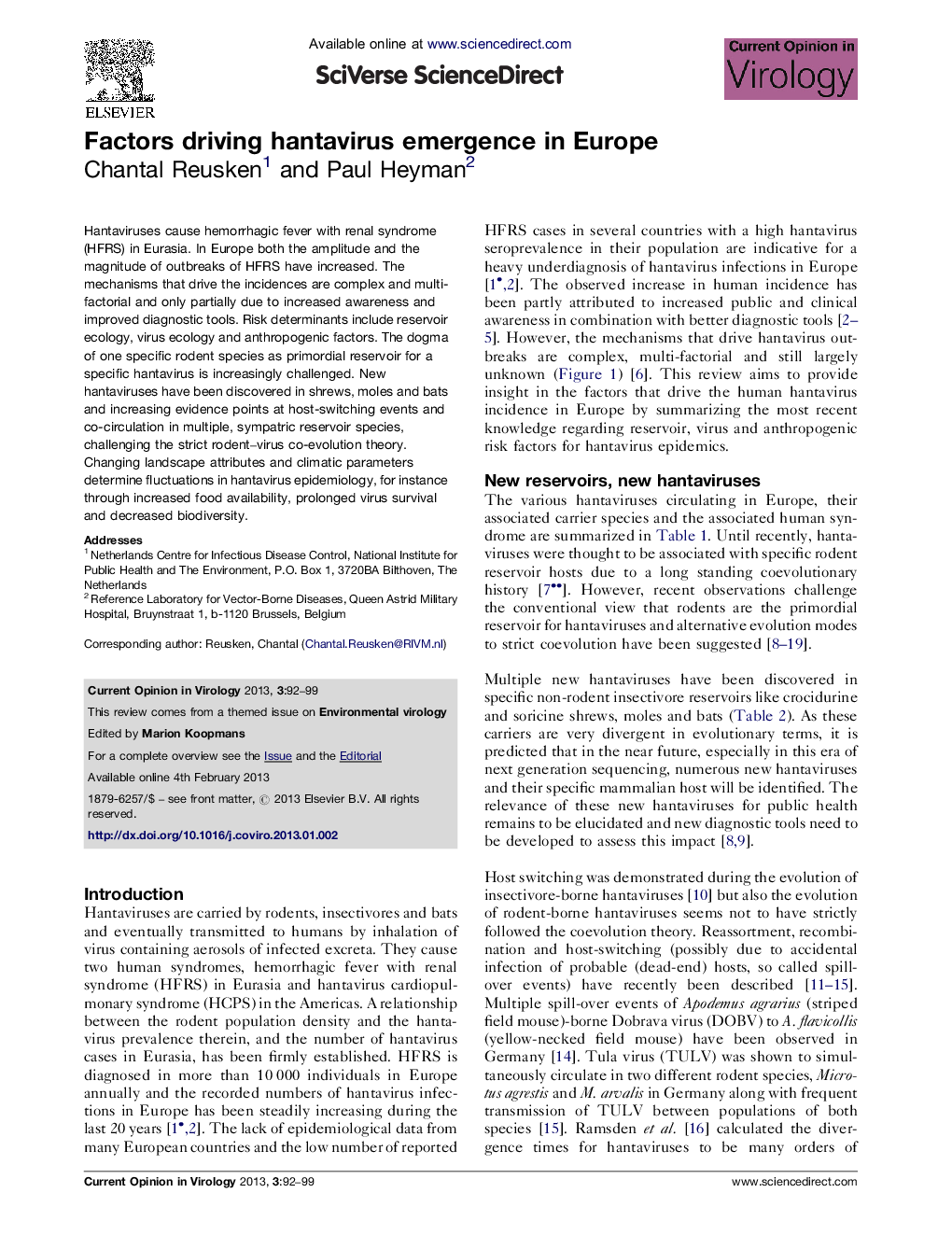| Article ID | Journal | Published Year | Pages | File Type |
|---|---|---|---|---|
| 2473530 | Current Opinion in Virology | 2013 | 8 Pages |
Hantaviruses cause hemorrhagic fever with renal syndrome (HFRS) in Eurasia. In Europe both the amplitude and the magnitude of outbreaks of HFRS have increased. The mechanisms that drive the incidences are complex and multi-factorial and only partially due to increased awareness and improved diagnostic tools. Risk determinants include reservoir ecology, virus ecology and anthropogenic factors. The dogma of one specific rodent species as primordial reservoir for a specific hantavirus is increasingly challenged. New hantaviruses have been discovered in shrews, moles and bats and increasing evidence points at host-switching events and co-circulation in multiple, sympatric reservoir species, challenging the strict rodent–virus co-evolution theory. Changing landscape attributes and climatic parameters determine fluctuations in hantavirus epidemiology, for instance through increased food availability, prolonged virus survival and decreased biodiversity.
► Mechanisms that drive increasing hantavirus incidences are complex, multi-factorial. ► Dogma: one specific rodent species as primordial reservoir is increasingly challenged ► Reservoir habitat attributes determine hantavirus epidemiology. ► Decreasing biodiversity favors hantaviruses with generalist, opportunistic hosts. ► The net effect of increasing temperatures on hantavirus incidence is unpredictable.
